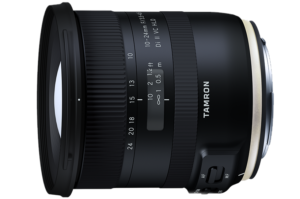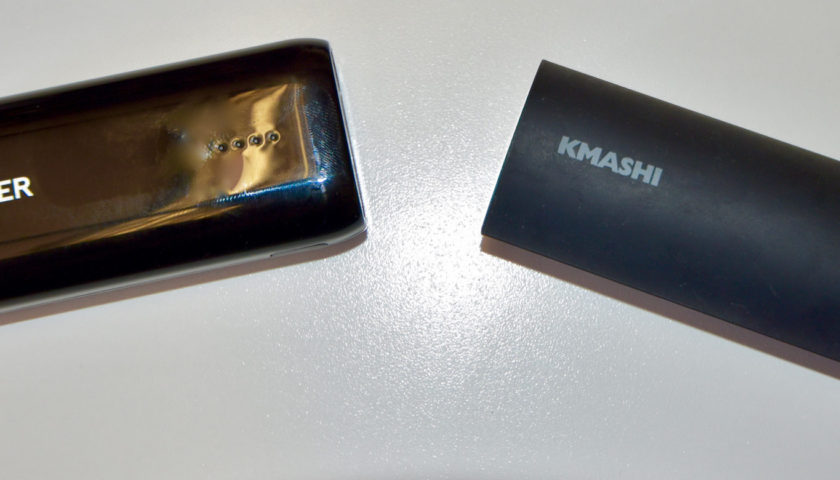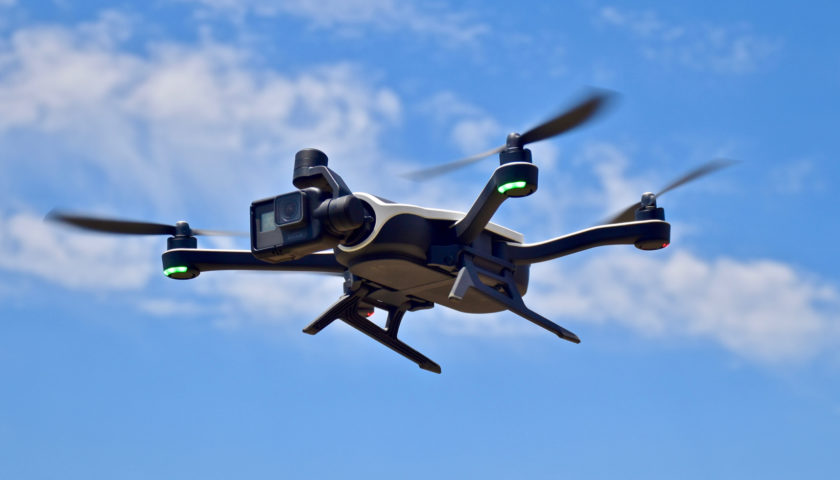Is it a good lens? No, it’s a great lens! However there are a few things that can make the difference between good and great!
When I first got my Nikon D5500 camera package, it came with a typical kit lens – the 18-140mm Nikkor. Under certain conditions, the kit lens did pretty well. I have actually taken some impressive photos for real estate listings. Of course this particular lens, like other kit lenses, is designed to be rugged, simple to operate and produce decently good photos while being relatively inexpensive as a good compliment to basic camera bundles.
Though it’s not a bad lens, it could be better. It’s only a natural desire to always want better photos, especially if your somewhat of a fanatic like myself about creating great looking photos.
The problem with the 18-140mm kit lens for real estate photography was generally two fold: The resolution could have been better AND 18mm is just not wide enough to effectively get into tight spaces like bathrooms, small bedrooms, etc.. to give people a feel of how the room looks as if they were actually standing there. Plus a wider angle lens gives a slightly distorted view, making the room seem bigger than it is. Even though you can tell the photo is misleading because of some image distortion – It’s just a WAY more informative photo to the eye.
How Did I Find This Particular Lens?
I literally spent hours & hours & hours researching the internet for the best value, highest quality, lowest priced, landscape, architecture/real estate, wide angle lens possible. I became obsessed with reviewing comparisons, looking at others’ photos, comparing price, resolution, ease of use, cons, pros, etc…
It was literally a mission of mine to find the right lens. Of course if money were no object then i’d just switch to a full frame, buy a sought after lens (probably expensive) and go to town… i’d prolly buy a whole line of lenses to cover everything from super wide angle to long distance zoom, a giant bag to carry everything in and a caddie to carry it around for me… But of course most of us are in the same boat – our finances are limited.
So price, overall, really is the biggest consideration – or REALLY what it boils down to is… ‘getting the best bang for the buck!’
I paid $499.00 for a brand new one. If your interested in buying or just browsing then this link will take you right to the ebay seller I bought mine from, Digital Goja. I bought from them because they have one of the best values I found. The lens comes with a camera bag, a cleaning cloth and some other misc goodies.
Plus dealing with them was painless, even when there was a mix up with the order (my fault) and I had to send my first order back because it was for Canon mount instead of Nikon. They took care of me with no hassles – even paid for the return shipping.
Note: The seller may change over time, but you will always be directed to a secure site with a solid guarantee such as Ebay or Amazon, etc…. ALSO, it’s been my experience that quite often the price $$ will drop after some time especially when the item was originally offered new for the first time.
Tamron Lens Sold Here
Tokina
My first attempt was not exactly what I wanted to end up with. Originally I had purchased a used Tokina 12-28mm lens. It was like brand new, very well taken care of and operated perfectly. There was just something about photos that I couldn’t put my finger on, at least not at first.
Tokina makes very nice lenses, in fact, I read they are one of the best lens manufactures in the world. I certainly got a pretty good deal on it. Normally a brand new copy sells for about $450 on up, and I got this one for $395, shipping included.
The Tokina takes very sharp photos with minimal barrel distortion and is really easy to use. The 12mm wide angle was certainly wide enough for what I needed and it had the 77mm thread for filters. (77mm is a very common size and filter cost can add up if you need to obtain a bunch of them for an oddball size).
Some people don’t really care about fine tuning their shots with various filters and so that would not be an issue for them.
I could probably make the Tokina work, but my obsession for getting just the right lens would not let me rest until I found something I could be content with.
Sigma
Sigma makes some very fine lenses too, as a matter fact I was so ready to save a bit longer and just grab one of their 12-24mm f/4.0 Art lenses. It is a big ole’ tank of a lens with this giant bulb sticking out of the front. I had the opportunity to snap a few photos with one of these using my D5500 at a local camera store. It’s very sharp and there’s virtually no barrel distortion, especially Horizontally. That big bulb must have something to do with that – but just a little aside, it won’t accept any filters because of the big bulb sticking out the front.
Those retail for about $1500 and for the kind of photos I have seen it take, could be well worth it – though it’s a heavy sucker! I considered it for a long time and maybe at some point, when I have the finances, might consider picking one up to have on hand.
Nikkor
The one lens I was extremely impressed with researching about was the mighty Nikon 14-24mm f/2.8. This is an awesome astrophotography lens because of how awesome it is across the whole lens at virtually any zoom. It takes tack sharp photos and the f/2.8 aperture means it does really well in low light situations which is great for night shots. Boy, if money were no object i’d prolly get one of these too. I don’t have any direct experience using one, but from what I have seen, the photos are magical!
So there were two things about that lens that made it a no go, at least for my specific real estate application. Number 1 it’s about $1300 for a used one and anywhere from $1500 to north of $2000 brand new. Number 2 was the fact that it would only zoom down to 14mm for the widest angle, which isn’t bad, but I really needed something just a bit wider than that.
Enter The New Tamron 10-24mm
Which brings me to this new version of the Tamron 10-24mm f/3.5 – 4.5. For starters, I got the lens and other goodies as part of a package deal for $500. So $500 for a very, very nice lens.
Here is what I like about it, then I’ll go into the things I don’t like.
The colors are magical for something at this price – any price really. The color reproduction is amazing! Though I process ALL my photos to the max to get as much out of them as possible, you have to have a very good photo to start with in order to achieve the best results. Especially if you want to spend the least amount of time behind the keyboard.
I would put the color distribution and accuracy on par with Canon’s renowned color reproducing abilities, but that’s just my humble opinion. The color and vibrancy are breathtakingly stunning, especially with the outdoor landscaping shots. Tamron really hit it out of the park with color reproduction accuracy.
Like all lenses, the color and sharpness quality are best achieved with more light rather than less. But, this lens does pretty well in low light as well, even though it’s widest aperture is f/3.5.
Like one reviewer I read had stated: “If they made this a f/2.8 instead of f/3.5, it would be an award winning lens!” The f/3.5 is not bad and can certainly handle some fairly low light situations well, but I agree that a f/2.8 would make this lens really, really outstanding!
One thing to note, the lens is actually classified as an f/3.5 – f/4.5 – meaning that the zoom setting will determine where in this range the widest aperture will end up.
Tamron Lens Sold Here
HDR Mode and a f/2.8 For An Even Better Photo
For instance, I use my camera in HDR mode (High Definition Range), which means it takes 2 photos in sequence very quickly and combines them into one. Basically the overlapping photo fills in any shadow areas to create a sharper, clearer photo, eliminating the need for flash in some cases. If the lens was a f/2.8 or WIDER, then there would be less need for post processing, producing even better image quality.
Still, this lens does a very nice job. One reason I believe is because of the Fluorine Coating and the BBAR (Broad-Band Anti-Reflection) Coating, which improves light transmission and suppresses reflection and dispersion on the lens surface. Whatever engineering was done, they created a winner!
This thing achieves very sharp photos in most cases when using the correct camera settings with my D5500. And when processed to make them as nice as possible, they are pretty much tack sharp in the centers, a bit soft around the edges, BUT outstandingly gorgeous in my book.
There are better DSLR camera body’s than the D5500 and that would only improve the overall image quality.
The Physical Attributes
It’s a beautiful looking lens. When zooming, the barrel BARELY moves back and forth, so balance is never an issue. It’s lightweight but has a solid feel to it. The controls like Manual or Automatic zoom and Vibration Resistance are easily reachable/adjustable. The zoom control is the only adjustment that’s not ideal. It’s up front and somewhat of a small ring. The manual zoom ring is closest to the camera. Basically the two adjustments are switched from what most any other lens would be. It’s not a big deal, but in an ideal world I would prefer them to be vise versa AND a wider zoom ring for more area to grab.
Barrel Distortion
So here’s where it can either be a good lens or a great lens:
At it’s maximum 10mm wide angle you really don’t want any straight lines in the frame if you can help it. Short straight lines can be acceptable, but not like door frames or anything that long. Even though this lens does a very good job of minimizing barrel distortion (better than most I read about), at times, depending on the shot, it can be VERY noticeable with 10mm. Anything at 12mm and up really goes along way to decreasing it.
Photo of moderate barrel distortion at 10mm wide angle view. Notice the bow in the mirror between the arrows. The distortion is quite apparent, but even at 10mm is less than most any other lens for a DSLR camera and depending on what the photo will be used for, is still very usable for most applications:

As one reviewer put it: “Hey, it’s a 10mm, what do you expect.” I totally agree. It’s not a deal breaker at all with me, here’s why: The 10mm setting is useful for some close up interior shots that do not have long straight lines in close proximity in the frame, IE small pictures, sinks, middle of the wall, etc… that don’t have a long straight edge that can be distorted. Of course with exterior landscaping shots there’s rarely an issue with barrel distortion because of the subject matter.
But again 10mm is a very wide shot, especially for a DSLR which basically has a 1/3rd smaller sensor than a full frame.
When shooting interior shots I always try to get everything I need inside 14mm or higher. At 14mm most all distortion goes away. I like the fact that for other really close shots I can crank down to 10mm if I have to. I’d rather get a somewhat distorted 10mm shot and deal with it, than not have that capability at all. Plus I like products that offer diverse benefits – I figure that I got two lenses in one – a great real estate lens that doubles as a landscaping lens too.
A lot of wide shot photos nowadays will have some degree of distortion and I believe it’s become an acceptable side affect, AS LONG AS THE PHOTO IS CLEAR AND ENJOYABLE TO LOOK IT. It’s just sort of expected in close proximity photos, especially with interior shots. Everyone understands that it doesn’t mean the door frame or tall cabinet is actually warped like that. But again, it’s nice to produce shots as UN-distorted as possible, so 12mm to 14mm and higher are definitely a more desirable setting if possible.
Bottom Line – How’s The Image Quality?
Since I do mostly real estate photos, I just so happen to have a few shots here that will illustrate the capabilities of this lens. Full disclosure – these are processed to get the maximum amount of WOW! But, if the photo was not very good to begin with, it would reflect in the final product, even after processing. So, every step of the way makes a difference in how the final product ends up, and in my opinion, yields a beautiful photo for excellent final results.
For processing I used Apple “Photos” and the finally tweak with Google’s photo app that can be accessed through Gmail.
The photos come out really nice straight off the camera, but of course, if you can make them even better without too much work (post photo) then why not?!
I’m particularly pleased with the way this lens reproduces colors. Tamron did an excellent job in this area. Sharpness gets high marks as well. I’d even go so far to say that tack sharpness can be achieved often, especially in well lit areas with some post processing. No small feat with a lens in this price range.
Again, if they had only made this a f/2.8 instead of f/3.5 it would be astonishing! But I think it’s still a winner and i’m MORE than pleased with my purchase.
If you take the plunge and acquire one off these bad boys, drop me a line and tell me about it – good, bad or indifferent. I’d really like to know what your experience is with what I consider to be a great little lens!
This post contains some affiliate links, so if you click on a link and buy something I will get a small percentage to help pay the blogging bills and keep my site ad free. But don’t worry, it’s absolutely NO extra cost to you. Thanks!
Tamron Lens Sold Here
Note: These photo’s are processed to get them looking optimal. Image quality is quite good without processing but of course I want them looking great!
Also, no flash was used for any of these photos. These are all with natural light and in some cases a good amount of post photo processing to lighten, sharpen, adjust the contrast, etc…



